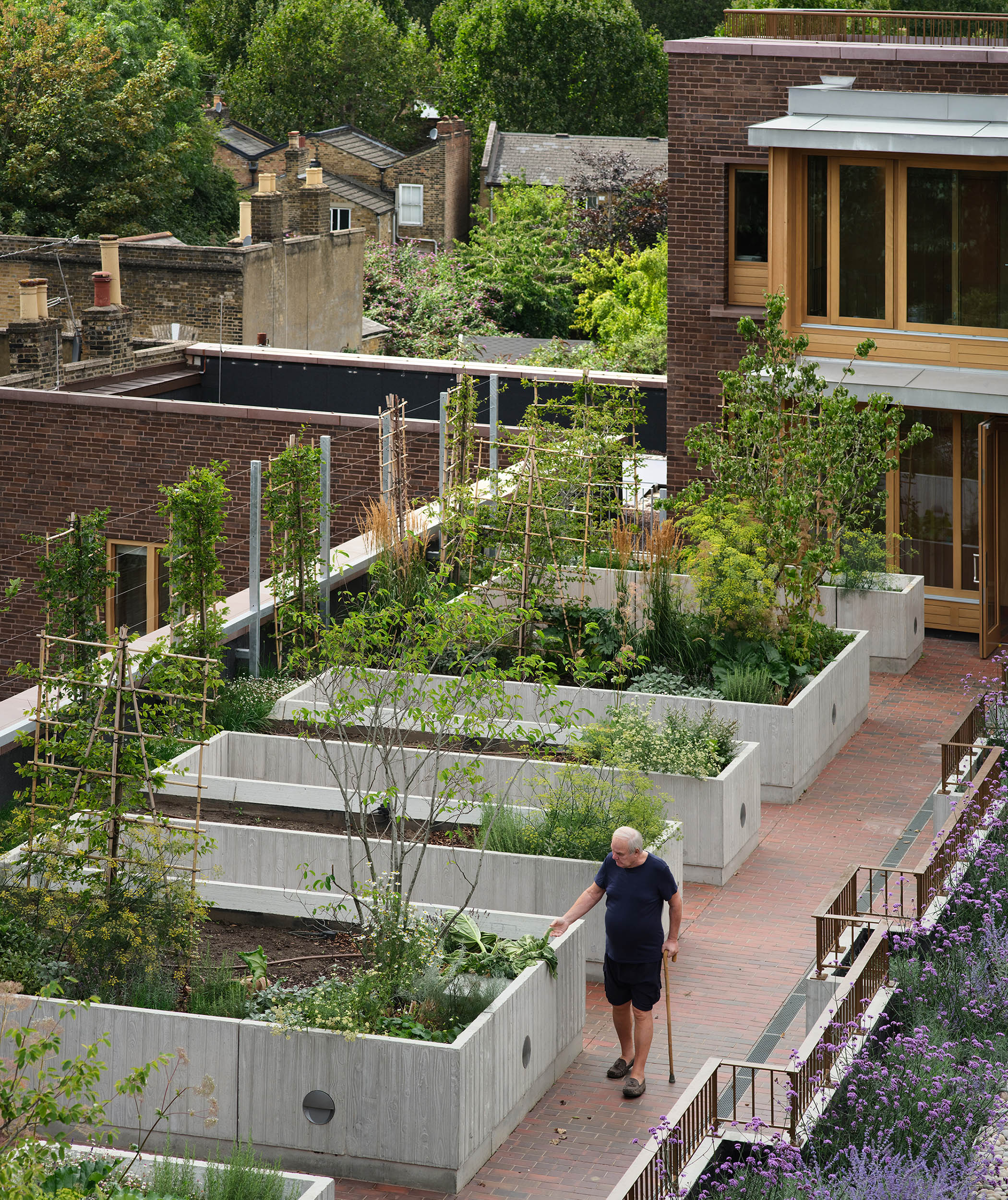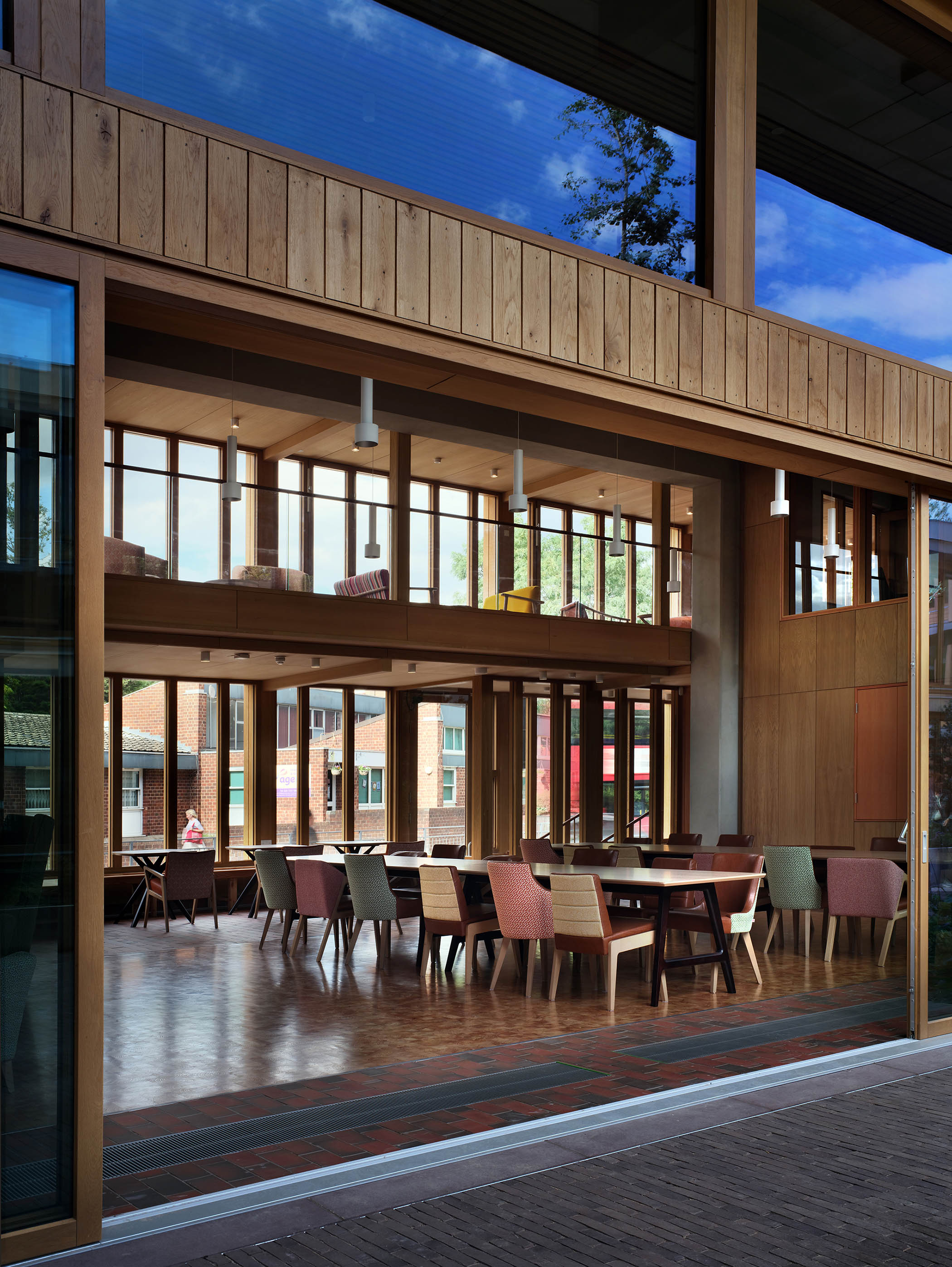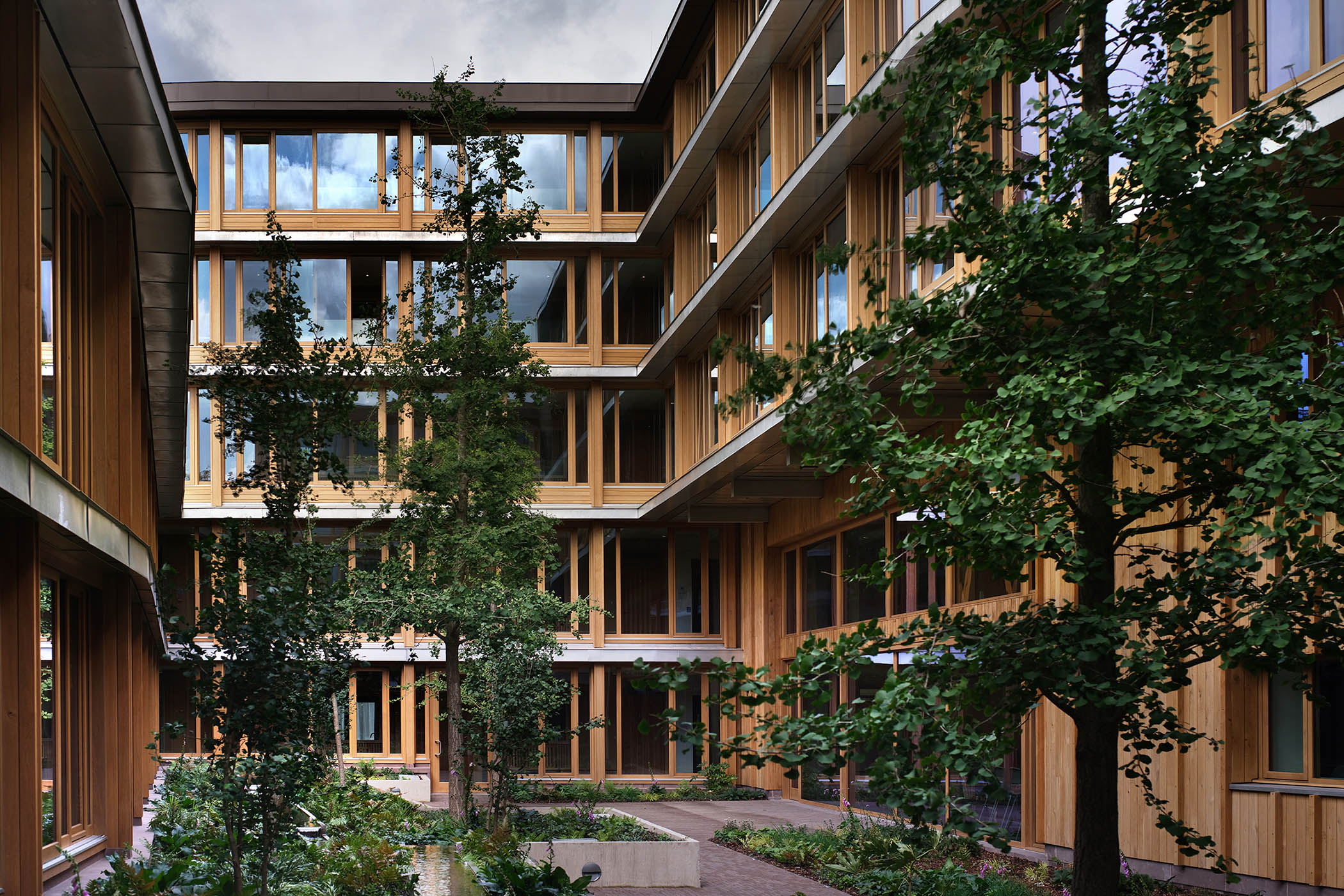The first thing to say about the winner of this year’s Stirling prize is that it is transparently deserving of the honour. Appleby Blue, a “new almshouse” in Bermondsey, south London, providing 59 flats for the over-65s, is a building where design serves a clear purpose: making homes for older people that are sociable, enjoyable and serene. It is a sheltered, luminous haven that is also part of the streets around it – one that aims to encourage a community to be, as the building’s architects Witherford Watson Mann put it, both “cohesive and outward looking”. It is the outcome of close collaboration with the building’s client, United St Saviour’s Charity, that paid close attention to its users’ needs.
Every space and detail work towards these ends. A courtyard garden offers peace and repose. A communal hall makes a shared place for eating, for parties, performance, exercise and classes. A long, two-storey bay window connects the interior to the outside world. The corridors are given extra width so that they are places to linger and meet rather than functional circulation routes. The finishes in timber, brick and tile speak of quality and care. Daylight pervades the interiors.

‘Every space and detail work towards these ends’: The peaceful communal courtyard at Appleby Blue in Bermondsey, south London
The building is also quietly handsome. The colours and laying of the bricks, the way they match other materials, the inflections in the walls, the shifts in scale, the balance and proportion of the whole are all carefully considered.
I write this as someone who backed another contender, the AstraZeneca Discovery Centre in Cambridge, where the wealth and expertise of a pharmaceutical giant went into creating a sumptuous place of research. If the prize were purely for richness of invention, this should have won. But it’s hard to think of a better use of architectural skills than the design of places where many if not most of us will spend the last years of our life.

A communal hall makes a shared place for eating, for parties, performance, exercise and classes
Awards juries are sometimes prey to contingent decision-making. Should we give the prize to someone new instead of a practice that won before (as Witherford Watson Mann did in 2013)? Didn’t we give the prize to a facility for old people two years ago (the John Morden day centre in Blackheath, London)? Should we, for the seventh time in the last 10 iterations of the award, give it to a project in the capital? This year’s jury, to their credit, ignored all the noise and went for what they believed was the right choice.
Why, though, are projects like this the exception? The London-centric nature of the award is not so much a reflection of jury bias as of the absurd concentration of material and professional resources in the capital. Why is the housing of older people not treated like this all over the country? Or, indeed, the housing of everyone else. You can only hope that the communities secretary Steve Reed – who recently proclaimed his desire to “Build, Baby, Build”, but hasn’t said much about quality – is paying attention.
Photographs by Philip Vile/RIBA

